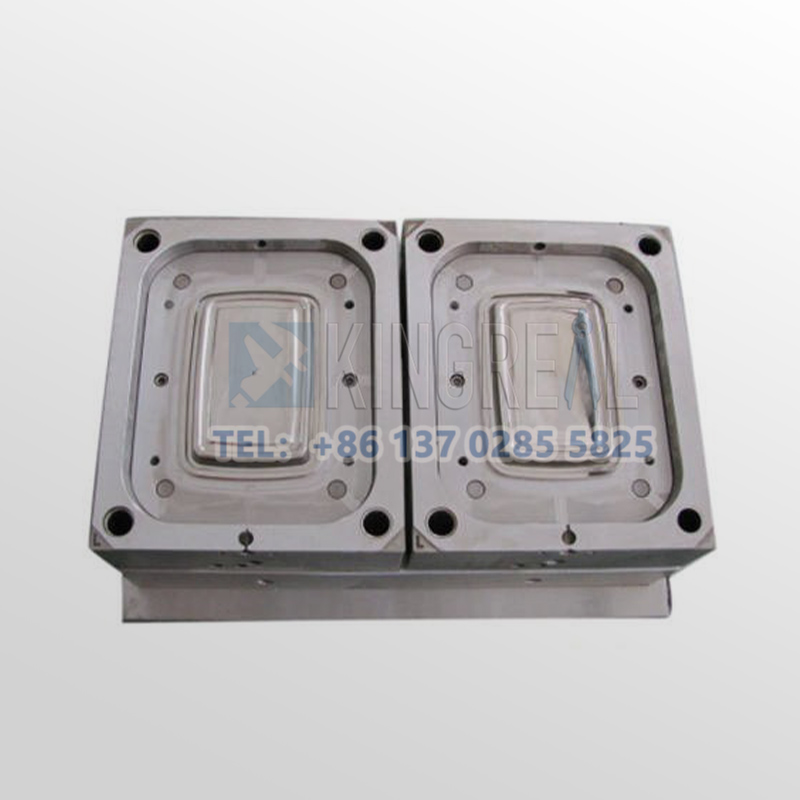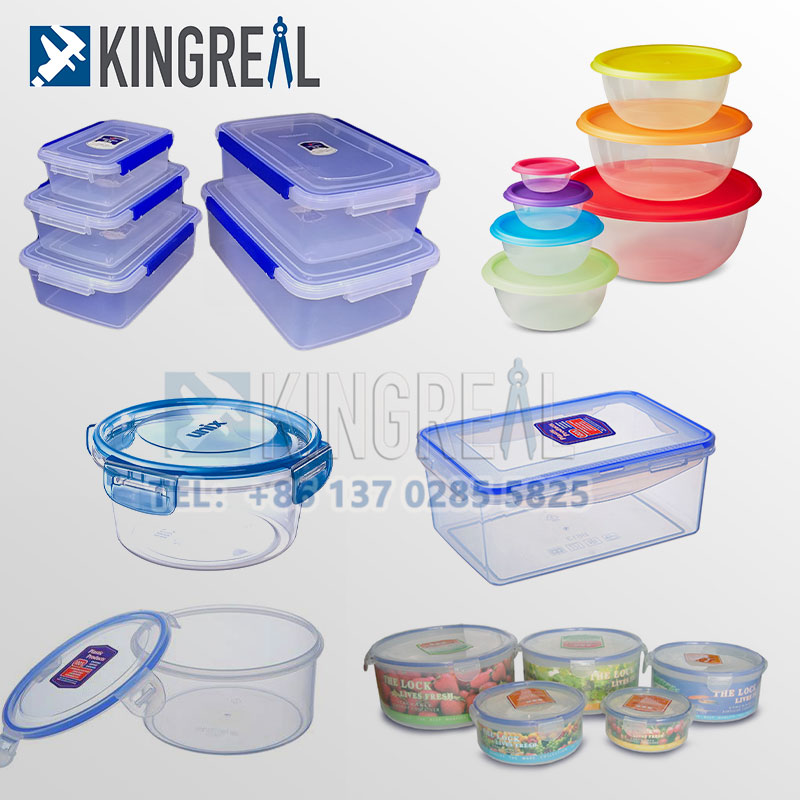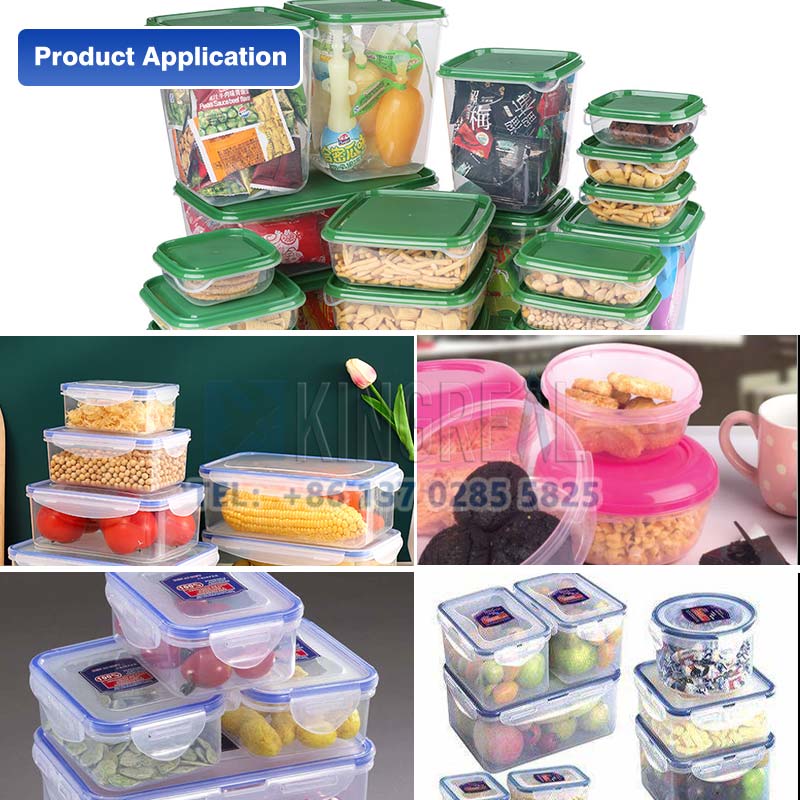
KINGREAL UNIVERSAL IND., LTD
Phone
+86-13702855825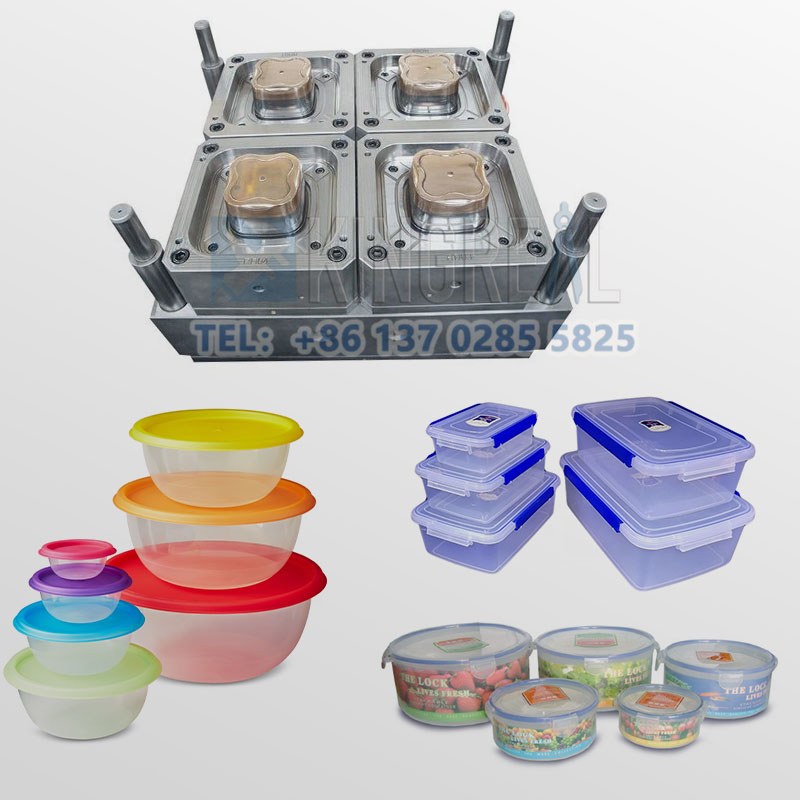
| 1 | The gate is difficult to strip |
| 2 | Guide pillar damage |
| 3 | The dynamic and fixed module offset |
| 4 | Bending of movable formwork |
| 5 | The ejector pin is bent, broken or leaked |
| 6 | Poor cooling or water leakage in waterways |
| 7 | Failure of the distance tensioning mechanism |
| 8 | The length of the guide groove is too small |
1. The gate is difficult to strip
In the process of packaging injection molding, the gate material is stuck in the gate sleeve and is not easy to come out. When the cosmetic container injection molds were opened, the product was damaged by cracks. In addition, the operator must knock out the tip of the copper rod from the nozzle to loosen it before demoulding, which seriously affects the production efficiency.
The main reason for this failure is that the smoothness of the taper hole of the gate is poor and there are knife marks in the circumferential direction of the inner hole. In addition, the material is too soft, the small end of the cone hole is deformed or damaged after a period of use, and the spherical curvature of the nozzle is too small, resulting in the riveting of the gate material here. The taper hole of sprue sleeve is difficult to process, so standard parts should be used as far as possible. If it needs to be processed by itself, a special reamer should be made or purchased. Tapered holes need to be ground to below Ra0.4. In addition, a gate pulling rod or a gate ejection mechanism must be set.
2. Guide pillar damage
The guide post mainly plays a guiding role in the food packaging injection molds to ensure that the molding surfaces of the core and the cavity do not collide with each other under any circumstances, and the guide post cannot be used as a stress piece or a positioning piece. In the following cases, the moving and fixed food packaging injection molds will produce huge lateral offset force during injection:
(1) When the wall thickness of plastic parts is not uniform, the rate of material flow passing through the thick wall is high, which produces greater pressure here;
(2) The sides of plastic parts are asymmetrical, such as the cosmetic container injection molds with stepped parting surface, and the opposite two sides are subjected to unequal back pressure.
3. The dynamic and fixed module offset
Due to the different filling rates in all directions and the influence of the dead weight of the food packaging injection molds when loading the large cosmetic container injection molds, the dynamic and fixed food packaging injection molds offset occurs. In these cases, the lateral offset force will be applied to the guide post during injection, and the surface of the guide post will be scratched and damaged when the food packaging injection molds are opened, and the guide post will be bent or cut off in severe cases, or even the cosmetic container injection molds cannot be opened.
In order to solve the above problems, high-strength positioning keys are added to the parting surface of the food packaging injection molds, one on each of the four sides, and the most simple and effective way is to use cylindrical keys. The verticality between the guide post hole and the parting surface is very important. During machining, the moving die and the fixed die are clamped in the alignment position and then bored on the boring machine at one time, which can ensure the concentricity of the moving die and the fixed die holes and minimize the verticality error; In addition, the heat treatment hardness of guide post and guide sleeve must meet the design requirements.
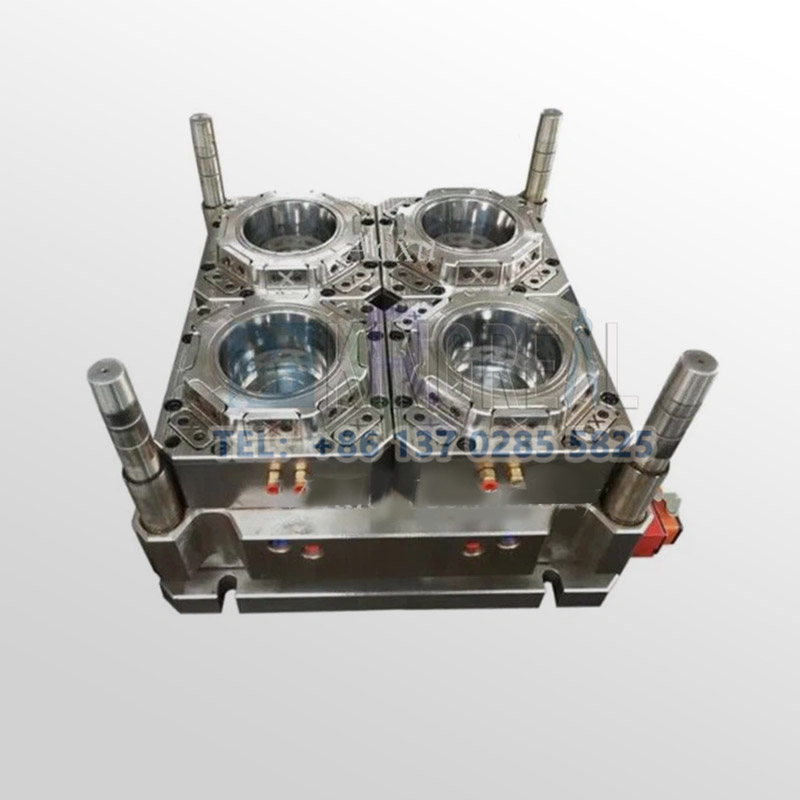
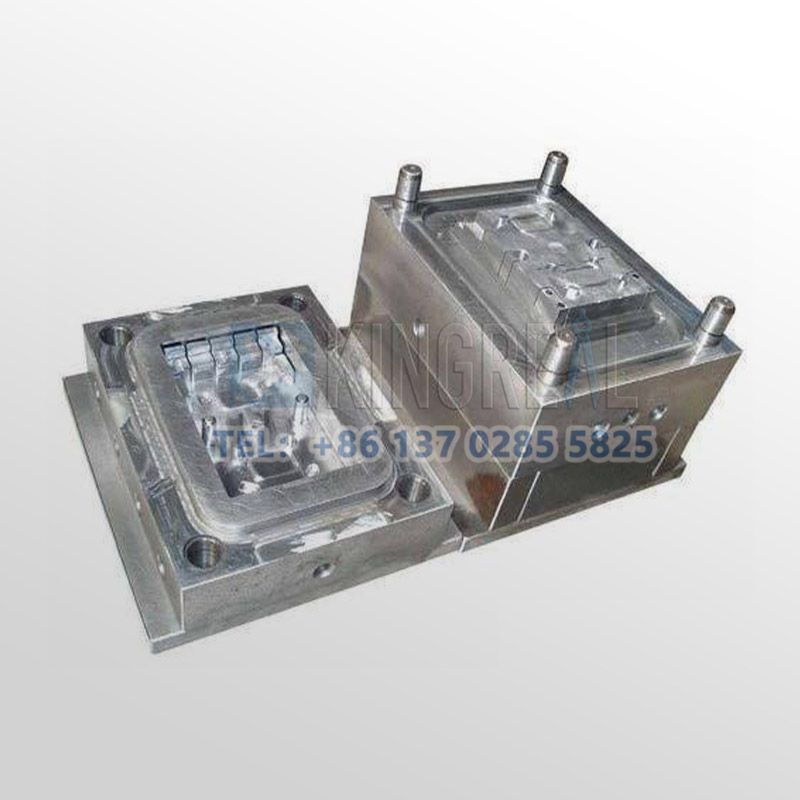
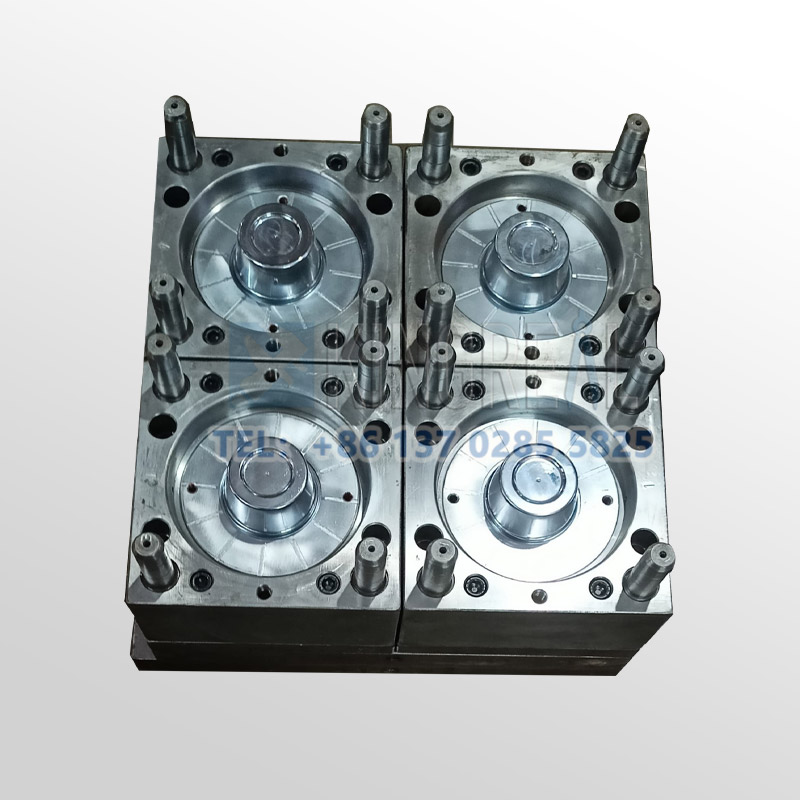
4. Bending of movable formwork
When the cosmetic container injection molds are injected, the molten plastic in the mold cavity produces huge back pressure. Food packaging injection moldsmanufacturers sometimes do not pay attention to this problem, often change the original design size, or replace the moving template with low-strength steel plate. In the cosmetic container injection molds with ejector pin, the template bends down during injection because of the large span between the two sides. Therefore, the movable formwork must be made of high-quality steel with sufficient thickness, and low-strength steel plates such as A3 must not be used. When necessary, support columns or blocks should be set below the movable formwork to reduce the bending degree of the formwork and improve the bearing capacity.
5. The ejector pin is bent, broken or leaked
The quality of the self-made ejector pin is good, but the processing cost is too high. At present, standard parts are usually selected, and the quality is average.
If the gap between the ejector pin and the hole is too large, material leakage will occur; However, if the gap is too small, the ejector pin will expand and get stuck due to the increase of cosmetic container injection molds temperature during injection. More dangerously, sometimes the ejector pin is pushed out for a certain distance, and it will break because it can't move. As a result, the exposed ejector pin can't be reset and the female die will be damaged in the next food packaging injection molds closing.
In order to solve this problem, the ejector pin needs to be reground, and the matching section of 10-15mm is reserved at the front end of the ejector pin, and the middle part is grinded 0.2mm smaller. After assembling all ejector pins, the fit clearance must be strictly checked, generally within 0.05-0.08 mm, to ensure that the whole ejector mechanism can advance and retreat freely.
6. Poor cooling or water leakage in waterways
The cooling effect of cosmetic container injection molds directly affects the quality and production efficiency of products, such as poor cooling, large shrinkage of products, or uneven shrinkage resulting in warping and deformation. On the other hand, the whole or part of the cosmetic container injection molds is overheated, so that the food packaging injection molds can not be formed normally and the production is stopped. In serious cases, the movable parts such as the ejector pin are stuck and damaged due to thermal expansion.
The design and processing of the cooling system depends on the shape of the product. Don't omit this system because of the complicated mold structure or difficult processing, especially for large and medium-sized food packaging injection molds. We must fully consider the cooling problem.
7. Failure of the distance tensioning mechanism
Fixed-distance tensioning mechanisms, such as swing hooks and buckles, are generally used in fixed mold core-pulling or some secondary demoulding molds. Because these mechanisms are arranged in pairs on both sides of the food packaging injection molds, their actions must be synchronized, that is, the mold is closed and buckled at the same time, and the mold is opened to a certain position and unhooked at the same time. Once out of synchronization, the template of the drawn die will be skewed and damaged. The parts of these mechanisms should have high rigidity and wear resistance, and it is difficult to adjust them. The service life of these mechanisms is short, so they should be avoided as much as possible, and other mechanisms can be used instead.
When the core-pulling force is relatively small, the spring can be used to push out the fixed die; In the case of large core-pulling force, the core can slide when the moving die retreats, and the core-pulling action is completed first and then the die is split; On large molds, hydraulic cylinders can be used for core pulling.
The inclined pin slider core-pulling mechanism is damaged. The common faults of this kind of mechanism are mostly that the processing is not in place and the materials used are too small. There are two main problems:
(1) The inclined angle a of the inclined pin is large. The advantage is that a larger core-pulling distance can be generated in a shorter mold opening stroke. However, if the inclination angle a is too large, the bending force (P=F/COSA) of the inclined pin will be greater when the pulling force f is a certain value, and the inclined pin deformation and inclined hole wear will easily occur.
(2) At the same time, the greater the upward thrust of the inclined pin on the slider. This force increases the positive pressure of the slider on the guide surface in the guide groove, thus increasing the friction resistance when the slider slides, which is easy to cause unsmooth sliding and wear of the guide groove.
According to experience, the inclination angle A should not be greater than 25.
8. The length of the guide groove is too small
Some food packaging injection molds are limited by the template area, and the length of the guide groove is too small. After the core-pulling action, the slider is exposed out of the guide groove, so it is easy to cause the slider to tilt in the post-core-pulling stage and the initial stage of die closing reset, especially when the die is closed, the slider is not reset smoothly, resulting in damage or even bending failure.
According to the experience, after the slider completes the core-pulling action, the length left in the chute should not be less than 2/3 of the total length of the chute.
When designing and manufacturing cosmetic container injection molds, we should consider the quality requirements of plastic parts, batch size, manufacturing deadline and other specific conditions, which can not only meet the requirements of products, but also be the most simple and reliable in mold structure, easy to process and low in cost. This is the most perfect cosmetic container injection molds.
